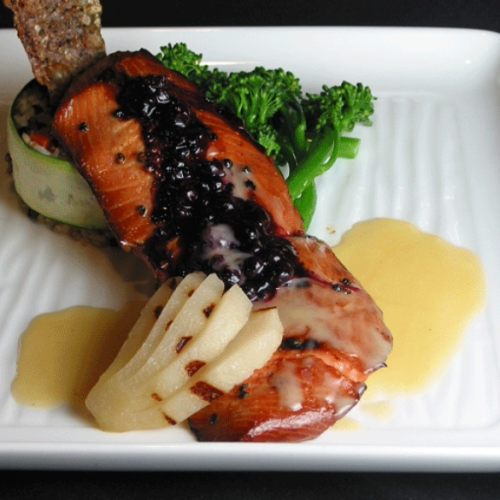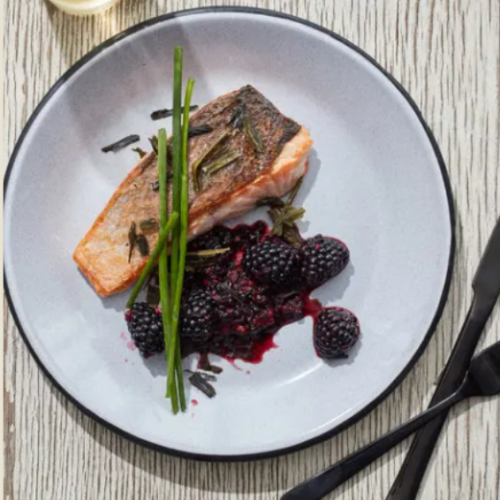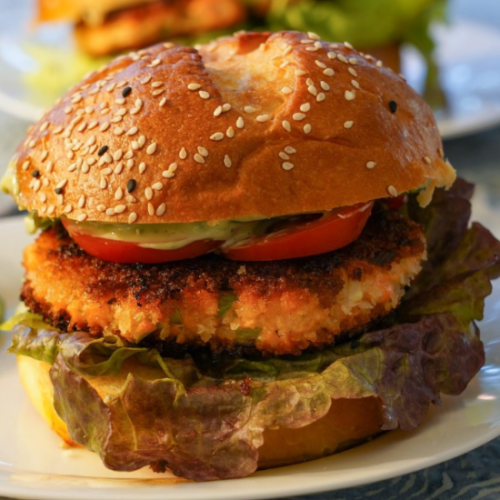Chinook (King) Salmon

Chinook salmon, also known as king salmon, range from the Chukchi Sea of Alaska to Central California. Like most other species of salmon, Chinook spend the first and last stages of their lives in freshwater rivers and streams, and in between these stages migrate to and from the Pacific Ocean where they live for several years. Chinook are the largest species of Pacific salmon growing up to three feet long or greater, and can weigh more than 40 pounds. In the ocean, Chinook salmon are blue-green with white bellies. They eat other fish, and their common predators include sharks and marine mammals such as sea lions and Killer whales. When the fish are two to seven years old, they return to the stream where they were born to spawn the next generation of fish. When they reenter freshwater, their coloration changes to brown, red, or purplish, and males develop hooked upper jaws.
Pacific salmon species occupy a unique niche in both ecological and cultural landscapes. Indigenous nations along the West Coast historically subsisted on salmon. Some present-day Indigenous peoples celebrate the significance of the species in First Salmon ceremonies, and Chinook remains an economically and culturally important resource for them.
Overall availability
Chinook salmon is fished in California, Oregon and Washington. It is available fresh seasonally, with the peak harvest occurring from summer to early fall, and available year-round as canned, smoked, or frozen product. Caviar can also be made from salmon roe.

Management
Chinook salmon are fished in Washington and Oregon using gillnets and troll gear depending on location, and in California using troll gear. Salmon management is multi-layered and highly cooperative among the Pacific Fishery Management Council, NOAA Fisheries, state Departments of Fish and Wildlife (WA, OR, CA). It is subject to the authority of the Pacific Salmon Commission and associated Pacific Salmon Treaty. In Washington, coastal, Puget Sound, and Willapa Bay and Grays Harbor Chinook salmon fisheries are co-managed between the Washington Department of Fish and Wildlife and Treaty Tribes, which are represented by the Northwest Indian Fisheries Commission and the Columbia River Intertribal Fisheries Commission.








